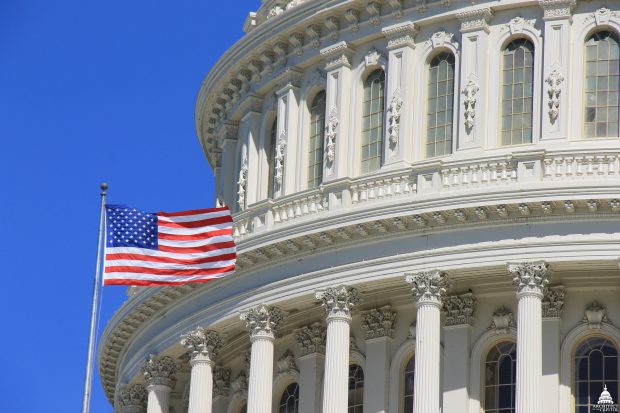
The “Real Asia Pivot”: Trump Will Do What Obama Only Talked About
Former President Obama should be given credit for recognizing this and for attempting, however weakly and ineffectively, to transition American attention further east. Ironically, due to his Administration’s failures, it is likely to be the successor to America’s self-purported “First Pacific President,” the ever-pugnacious but unabashedly pro-American Donald Trump, who will have to implement a true pivot to Asia and away from regions in the world where the U.S. has overcommitted.
President Barack Obama intended to be the first “Pacific President” for the United States and billed himself as such during the early part of his Administration. Obama recognized the immense potential in Asia and made clear his intention to divest the U.S. from wasteful interventions and over-commitment in more stable and less important regions of the world such as Europe and the Middle East. It with great fanfare that his first Secretary of State, Hillary Clinton announced the Administration would focus more on Asia and embrace a so-called “Pivot.” To this end, President Obama slowly started shifting U.S. naval assets to Asia and worked hard to secure passage of a large-scale free trade agreement, the Trans-Pacific Partnership (TPP) that would maintain U.S. access to the region even as China’s economic clout continues to grow.
Unfortunately, at the end of his years in office, this pivot proved to be largely unfulfilled.
The U.S. Senate never took up the TPP for a vote. Due to domestic spending restraints, the number of U.S. naval assets available to shift was left in a declining state both numerically and qualitatively. China made major strides in constructing man-made islands in the South China Sea while creating and Asia Infrastructure Bank to cement its already essential role as the central economic engine in East Asia. Multiple countries in the region were wondering whether to hedge their bets on China’s rise and American withdrawal, including key states like the Philippines.
Into this tumultuous geopolitical environment strode the newly elected President Donald Trump. President Trump ran and was elected on a platform that played to domestic U.S. fears of being taken advantage of by other nations throughout the world. He promised to focus, laser-like, on U.S. national interests and spoke in bellicose terms about China in particular while bringing major China hawks, like Peter Navarro (who wrote a book unsubtly titled “Death by China”), to Washington with him.
President Trump promised to bring back manufacturing jobs many in the industrial Midwest, the states that gave President Trump his election victory, felt had been stolen by a cheating China. He promised to do this by “leveling the playing field” and making sure China was put into it’s place.
One of his very first acts was to become the first President-elect, to personally speak with the President of Taiwan since relations were broken in 1979 as a part of normalization with China. He subsequently raised questions on what his new Administration’s stance on the cornerstone of Sino-U.S. relations, the “One-China” policy, might be, something no U.S. President has done since Richard Nixon went to China in the early 1970s.
Further, on his first full workday after being sworn in, President Trump formally suspended the TPP to the consternation of the many nations that had bee negotiating the deal for years. Meanwhile, President Trump’s Secretary of Defense, James Mattis, has gone on a tour around Asia to calms the frayed nerves of U.S. allies like South Korea and Japan.
Overall, many analysts are scratching their heads at the seemingly mixed messages coming from the Trump Administration. Many think that President Trump is essentially gutting all of the efforts that former President Obama put towards shifting U.S. focus to Asia and risks isolating the U.S. regionally. Though understandable given the abrupt and dramatic departure from Obama’s mellifluous rhetoric that Trump represents, these fears are overblown.
President Trump has made clear he intends to negotiate bilateral trade deals, thus, while the TPP being killed might delay advantageous arrangements, there will continue to be an effort to remain deeply engaged in Asia economically. Also, President Trump is clearly showing his desire to rebuild the U.S. Navy which should be heralded by friends in the region that wish to hedge their bets on the peacefulness of China’s rise. Finally, while he did eventually recognize the “One China” policy in his first communication as President with Chinese President Xi Jinping, President’s Trump’s willingness to even question a policy long seen as sacrosanct shows that he, unlike President Obama, is willing to play hardball with China.
Taken together, this means that President Trump is quite clearly engaged with Asia, but anticipates keeping American interests first in all of his dealings. This sets the foundation for what will be a long-term evolution of American policy that sees it inexorably engage more deeply with Asian geopolitics. America is not going anywhere and will play a pivotal role is assuring the entire region than the regional superpower to be, China is not the only game in town. Though his approach might not be the preferred approach of many in the region, President Trump is showing himself more interested in actual accomplishments as opposed to nice sounding sound bites without follow through.



